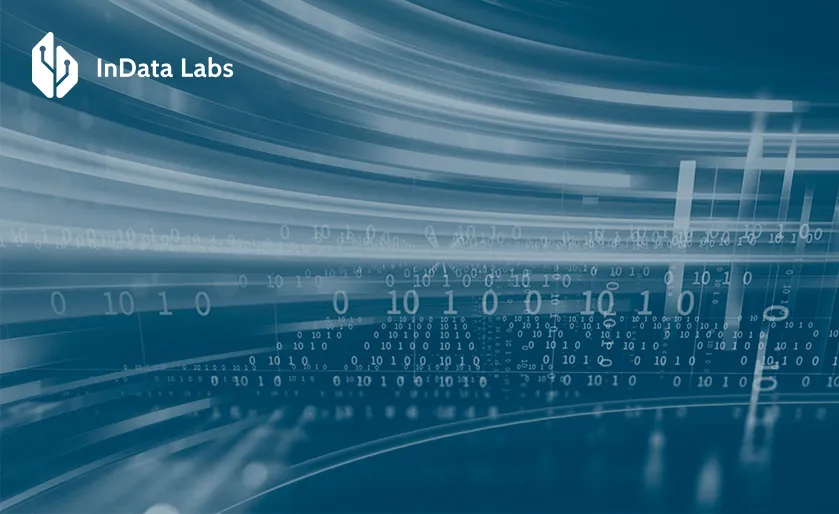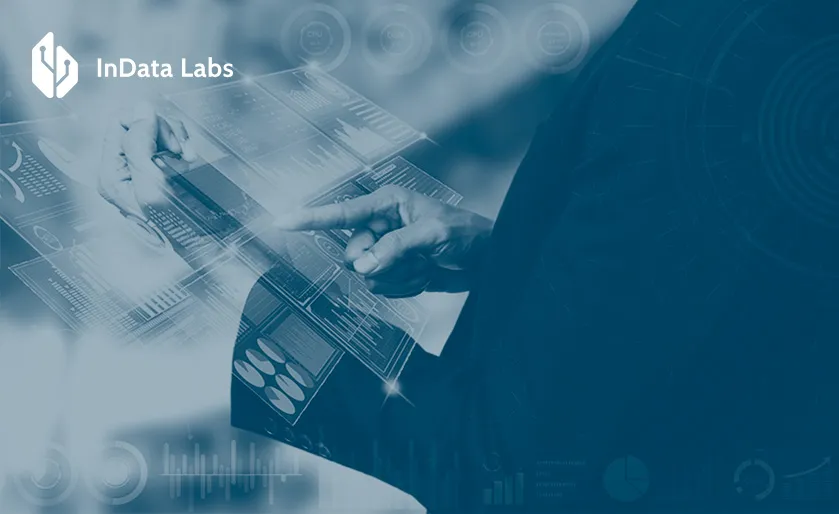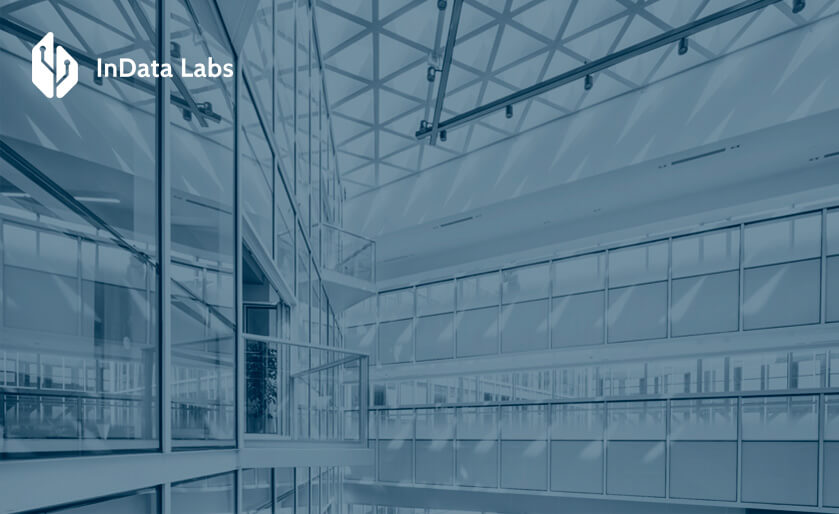Today, the world, its businesses and organizations, and their processes rely on Big data and forecasting more than ever. According to the latest Data Age report from IDC, the global data sphere may reach a size of 175 zettabytes (ZB) by the end of 2025. The increased prevalence of cloud-based data storage, Internet of Things-connected devices, and real-time data processing accelerates this growth.
The term ‘Big data’ encapsulates this vast volume of digital information. Big data is a large, expanding, and diverse data aggregation that grows exponentially yearly. It consists of partly structured, fully structured, and unstructured datasets. Their size and complexity make it virtually impossible for standard data management systems to store and analyze them. This is where Big data analytics and forecasting solutions enter the picture.

Source: Unsplash
As the breadth and scope of Big data continue to develop, new tools are being formulated to make it easier for organizations to collate, store, process, and extensively analyze it. Once analyzed, it can be integrated into predictive modeling algorithms, machine learning programs, and sophisticated analytical systems to solve key business challenges and assist leaders in making optimal, data-driven decisions.
Understanding Big data forecasting solutions
To understand Big data’s potential for enhancing business systems and decision-making processes, it is vital to understand Big data solutions fully and what they offer. Aside from Big data and weather forecasting, several unique types of Big data solutions are available. Each offers distinctive capabilities and advantages that can help create a resilient organizational ecosystem.
As far as Big data examples go, Big data analytics is one of the most widely used and cited solutions. These solutions are engineered to process and structure immense data sets and extract underlying trends, patterns, and insights.
Advanced analytics tools are particularly adept at pinpointing trends in large volumes of data. Predictive analysis is effective at forecasting and predicting future trends and phenomena. To learn more about advanced data analytics, please watch a video:
Many data processing applications include modules for in-memory data processing, while others provide real-time data analytic capabilities. Business intelligence platforms are optimized for analyzing data and transforming insights into legible and actionable visual representations. Those that include machine learning algorithms also allow users to classify data and carry out predictive modeling processes.
Then there is cloud computing, a Big data solution with an exceptionally high level of scalability. As their name suggests, cloud computing solutions are based on cloud infrastructure. Organizations that adopt them can shift away from on-premise computing systems and move their operations into the cloud. This can reduce computing costs and offer businesses instant, efficient data management services.
Data storage is also a Big data business analytics solution. Big data storage systems allow organizations to store a variety of data types securely on SQL and NoSQL databases. The appropriate storage system can provide an organization with real-time, on-demand access to extensive datasets, regardless of when or where they need to be accessed.
Big data in weather forecasting
A 2021 study published in Archives of Computational Methods in Engineering notes that weather forecasting is one of Big data’s most prominent current applications. Weather forecasting is an invaluable tool for billions of people and aids physical businesses in protecting their assets against the elements. It’s also a prime example of Big data’s impact on society as it can predict disasters affecting socio-economic conditions.
Big data in weather forecasting facilitates more accurate weather predictions. It does so by extracting patterns and trends in weather conditions that are not evident to the human eye. This ability enables meteorologists to predict the weather more precisely. This ability persists even as global warming creates marked shifts in climatic patterns and conditions.

Source: Unsplash
Big data in weather forecasting applications and challenges
Big data used in weather forecasting assesses a broad range of oceanic, radar, and satellite data to provide clear insights into short and long-term weather patterns and shifts. Analytics tools can forecast immediate, seasonal, and climatic changes with a great degree of accuracy by identifying changes in:
- Precipitation
- Temperature
- Other conditions.

The obstacles in applying Big data analytics to weather forecasting relate primarily to cost efficiency and logistics implementation. Vast amounts of data are required to integrate machine learning into forecasting processes, and the complexity of the models produced can be demanding, even for specialists to interpret. This could necessitate using other data analytics tools to produce decipherable insights at a higher cost.
Real time data analysis may be prone to a degree of ‘noise’, which may impact the accuracy of predictions. This is especially pertinent to disaster response endeavors. Here, accurate and rapid predictions are required to save lives and infrastructure at scale.
Data analytics forecasting in finance
Big data offers a comprehensive range of applications in finance and financial forecasting. According to a 2023 study published in the International Journal of Science Technology and Society, Big data is currently one of the most influential technologies in the financial management industry.
A number of key factors are driving this influence. Firstly, Big data allows financial institutions to use and analyze large and diverse volumes of data. This ability allows them to:
- Structure and implement sound financial management strategies.
- Make accurate decisions as rapidly as possible.
- Predict notable financial risks and proactively implement preventative strategies accordingly.
Traditional financial forecasting processes have long utilized historical financial indicators and periodic reports to make future predictions. However, these methods are limited in their ability to analyze and accurately project future insights, volatility fluctuations, and relevant investment risks.
Standard practice has been limited in consolidating large volumes of data. However, with easy access to data analytics now readily available, these two processes have become essential for accurate forecasting.
More holistic financial analysis
Big data’s wealth of insights from consumer data collection, competitors’ documentation, transaction and project management records, CRM platforms, and IoT sensors can provide a deeper degree of insight into financial industries than ever before.
Data analytics and forecasting tools in accounting can analyze the full spectrum of these insights. As they do, they can identify complex and nuanced links between data points, including points that human finance professionals may have overlooked in the past.
Incorporating data analytics forecasting into finance forecasting workflows can improve the depth and scope of financial analyses. It empowers professionals and leaders to make more contextually sound and relevant decisions, allowing for the development of holistic financial solutions for consumers and clients.
Financial institutions using Big data analytics can also:
- Predict market trends consistently and reliably.
- Gain meaningful insights into consumer behaviors and sentiments.
- Develop products and services that meet their clients’ current and future needs.
Analyzing the US data analytics market
The state of the data analytics market in the US clearly shows the accelerating adoption of Big data solutions. In 2024, Grand View Research reported that the market was valued at $14,720 million.
By 2030, this value is anticipated to reach $43,519 million. This growth is underlined by a predicted compound annual growth rate (CAGR) of 20.7% between 2025 and 2030.
The data also highlights that predictive analytics was the largest, fastest-growing segment of the market as of 2024. IMARC Group predicts that the predictive analytics industry in the United States will achieve a CAGR of 14.3% between 2025 and 2033.
How forecasting with Big data supports business growth
Big data forecasting encompasses a number of tools and strategies for predicting shifts and changes in business indicators like expenses, sales, and profits. Business forecasting has long been used to inform tailored strategies based on real-world data.

Strategic decision-making
Forecasting data analytics lets organizations formulate data-based strategies. These strategies allow them to make educated decisions that drive their growth and progress.
Predictive analysis solutions allow business leaders to predict what will likely happen in the future. These predictions are based on a combination of past data and trends and informed algorithmic estimations.
Enhanced operations
Big data forecasting has robust applications in financial risk assessment processes, sales forecasts, customer churn and engagement analyses, and operational efficiency improvement.

Source: Unsplash
Advanced tools can assess past and current internal processes, highlighting potential bottlenecks and inefficiencies. These actions can enhance operations and potentially reduce operating expenses. Big data analytics and demand forecasting in supply chains can:
Improve inventory management
Minimize wastage
Improve supply chain resilience and transparency.
Identifying potential revenue streams
These tools are widely used to identify potential revenue streams and promising new markets. Customer segment, sentiment, and Big data demand forecasting can assist organizations in predicting market demand on target.
This helps them proactively develop products and services, meet anticipated demand, and secure a market share ahead of their competitors. Data analytics forecasting sales can further predict future sales outcomes. This allows businesses to adopt measures to increase sales and consistently meet quotas.
Nurturing leads and customers
Customers and clients are the foundations of B2B and B2C businesses. Both can use predictive forecasting to enhance their customer experiences.
Analyzing customer preferences, needs, behaviors, friction, and pain points can support the development of hyper-personalized consumer experiences. These are essential for promoting customer engagement and persisting satisfaction.

Source: Unsplash
Targeting marketing efforts
Marketing, the foundation of customer conversion, may also be enhanced with forecasting. Organizations can use Big data analytics and predictive forecasting to improve their marketing strategies based on past successes and failures. Forecasting in data analytics may assist in targeting key audiences at optimal times, which can, in turn, maximize returns on marketing investments.
Big data tools can further:
Track the performance of marketing campaigns.
Predict which tactics and channels produce the most conversions.
Support more streamlined resource allocation to high-performing conversion channels and media.
Demand forecasting Big data with sophisticated tools
When learning how to forecast financial data with Big data solutions, the first step is to obtain the right data sources for the forecasting process from an AI company or software program. Organizations should focus on a few key data sources to support these efforts. Information that can be used to build multifaceted financial forecasting Big data models includes:

These data sources and any others used should be evaluated for quality on a regular basis. Businesses can use proven data cleaning strategies to remove inaccurate or outdated data. They should also audit information sources frequently to ensure that they are providing quality data. Standardizing the types of formats used can streamline the process of data analysis. Automating this process can reduce the margin of human error involved in manual data entry.
Data analytics tools are some of the most effective tools available to forecast business finances accurately. They encompass predictive, descriptive, and prescriptive analytics. These can extensively analyze and provide clear data strategy insights for improved forecasts. Implementing them effectively entails using advanced techniques like machine learning, regression analyses, and time-series analyses to increase the precision of financial estimations.
Companies that include predictive analysis in financial forecasting processes are positioned to plan for various scenarios. They can use these plans to manage and mitigate risk and optimize their operations at every level. They can also use demand forecasting Big data to respond to consumer demand and nurture conversions and sales.
Selecting the appropriate analytics tools
Selecting a tool that aligns with an organization’s distinct needs and objectives is essential for strong financial forecasting with Big data. Each tool and technique can significantly impact the results and accuracy of forecasts. Techniques such as simple and multiple linear regression and straight-line forecasting can help organizations assess past data using analytics tools. These can also project future trends, risks, and revenue potential.
Predictive modeling tools are another versatile type of Big data analysis tool to consider. Predictive modeling enables precise forecasting by analyzing historical data sets to predict coming trends and patterns. It can assist companies in evaluating key risks and pinpointing trends in purchasing, consumer behavior, and Big data economic forecasting.
Predictive modeling platforms use machine learning algorithms to assess vast, complex data sets. Once analysis has been completed, these tools produce legible, structured data. This data can be used to improve predictive models’ forecasting capacities notably.
Businesses may use predictive modeling to:
- Forecast and streamline cash flow.
- Make sufficiently informed investment actions.
- Pinpoint fiscal risks and draft comprehensive risk mitigation plans.
- Use artificial intelligence to support their processes of credit scoring.
- Analyze transactions to spot any risks of fraud and address imminent threats in real time.
The future forecast for Big data analytics
The future is expected to bring significant expansions and developments in Big data analytics. According to statistical data published by Maximize Market Research, the global market was valued at $244.13 billion as of 2024 and is expected to expand to $621.94 billion by 2032.
The anticipated CAGR of 12.4% between 2025 and 2032 highlights positive predictions for growth and increased adoption. As per 2024’s data, cloud-based software is dominating the market at present.
North America and the U.S are leading this expansion, and their data centers have the highest number of physical and virtual web hosting servers globally. The U.S. has also quickly adopted data analytics across key sectors, including IT, finance, healthcare, B2B, and B2C industries.
Over the coming years, Big data analytics services are expected to be increasingly influenced by predictive analytics advancements, AI and machine learning integration, and powerful cloud computing technologies. Predictive analytics may play a greater role in providing key business insights in the future. Their potential lies in enhancing decision-making processes’ speed, precision, and accuracy.

Source: Unsplash
Cloud computing is already changing how organizations manage their data analytics processes. This type of computing has given rise to BdaaS (Big data as a service) platforms, allowing vast dataset management to be conducted on the cloud. Cloud-based data analytics will reduce business analysis costs, allowing for smooth scaling as needed. They are also set to enable growing datasets to be managed without costly investments in infrastructure.
Artificial intelligence is also becoming increasingly prevalent in software development. As AI software development advances, it becomes exponentially more capable of analyzing large datasets. This is especially true when AI is used alongside machine learning modules. These tools may further streamline and automate the data analysis process, accelerating innovation and enabling businesses to retain their competitive edges in evermore saturated markets.
In summary
Big data has become an essential component in effective data analysis and forecasting. As datasets grow in complexity and size, new technologies like blockchain, edge computing, and quantum computing may feature more prominently in Big data analytics tools.
These technologies will make it possible for organizations to store, assess, and gain insights from data at unprecedented scales and speeds, providing even more benefits of Big data analytics to future organizations. Future predictions aside, Big data solutions can enhance financial forecasting and allow businesses to base their decisions on reliable information.



